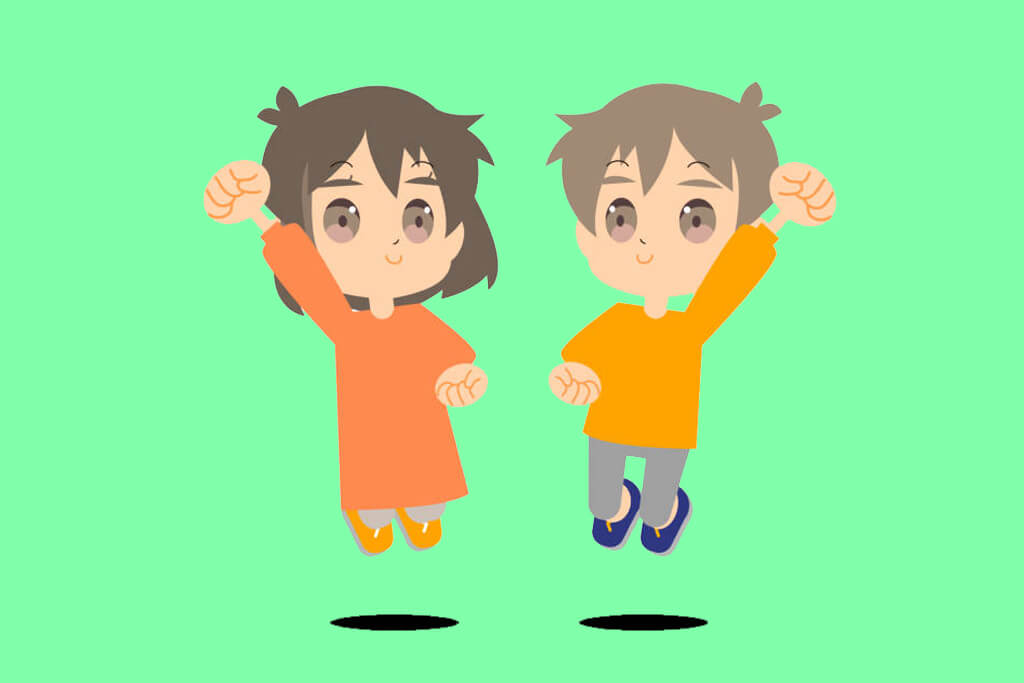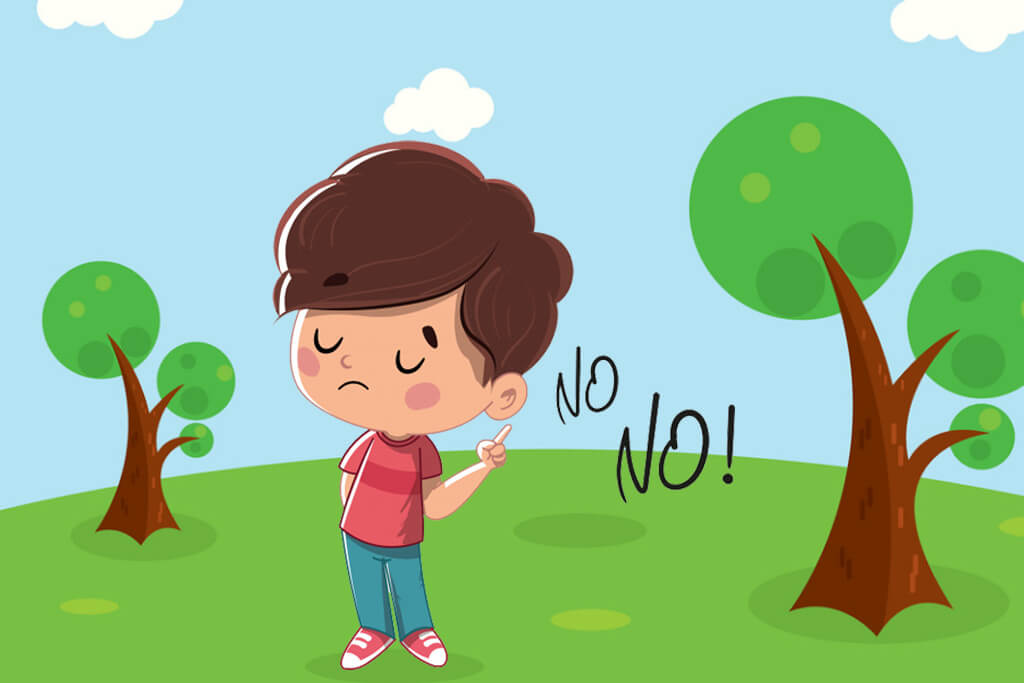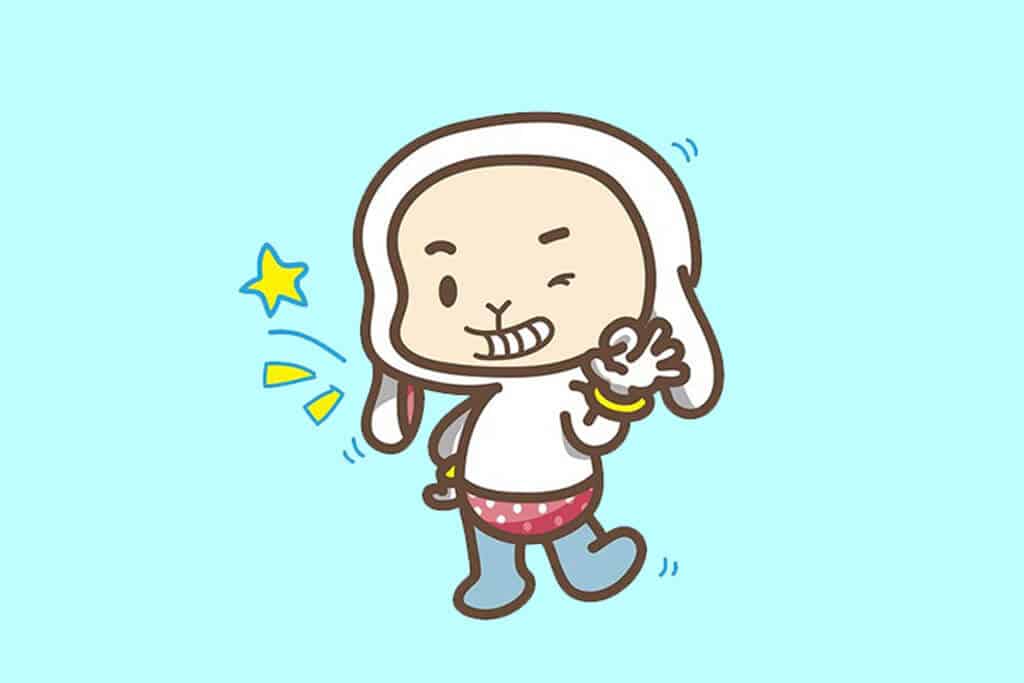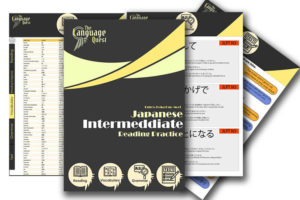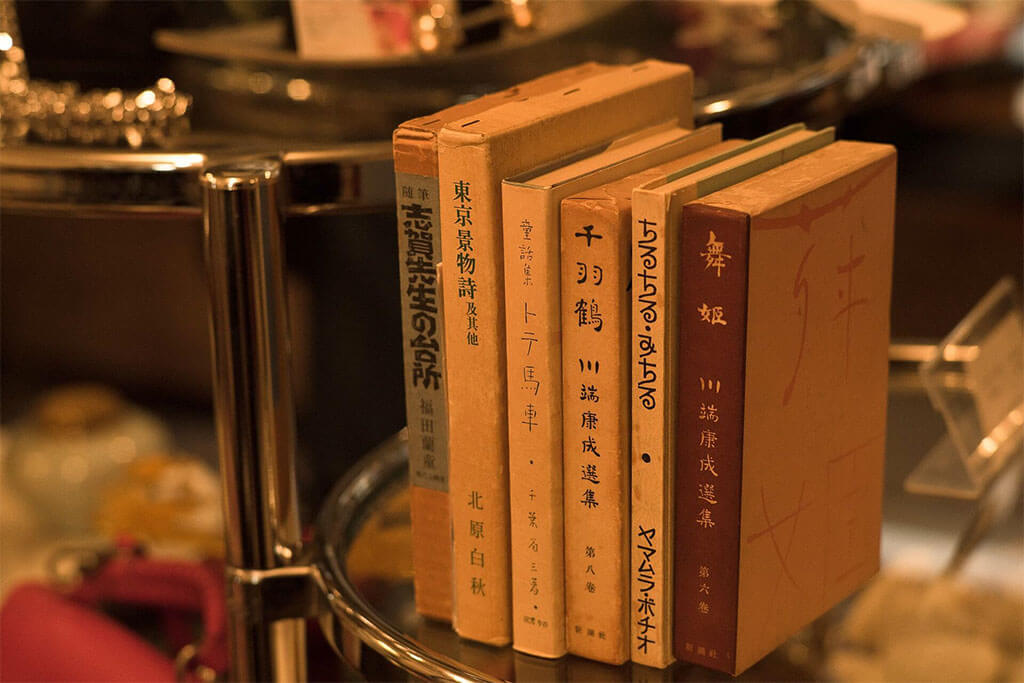How to say Have a Good Day in Japanese
Despite being a very polite language, the Japanese language lacks a way to directly communicate “have a good day”.
In English, we say things like: “have a good day at work today,” or “have a nice weekend” quite frequently. Whereas, in Japan, the custom of expressing these kinds of wishes to people isn’t really a thing.
Japanese is a language with many honorifics, many of which are mandatory in many social situations to show respect. So it’s certainly a little strange that there isn’t a way to say exactly: “Have a good day” in Japanese.
That is not to say that there isn’t a way to even slightly convey these wishes to someone in Japanese at all, however.
Depending on the situation, whom you’re speaking to, and even when you’re speaking to them, there are plenty of phrases that you can use to express something similar to that of: “have a good day” in Japanese.
In this post, I am going to break down this phrase and explore all of the possible ways, and expressions that you can use when you want to tell someone “Have a good day” in Japanese.
Author’s Note: The audio files presented are the natural way to pronounce each entry of “Have a good day” in Japanese, so I recommend using them when referring to pronunciation if you can!
Have a Good Day in Japanese
We quite frequently say “have a Good Day” in English. It might be something you say to the shop assistant after they help you with your shopping, to a friend when you part, or to a family member as they are about to go out the door for work.
In English, telling someone to “have a good day” is as simple as saying those very words. In Japanese however, you’re going to need to say something different depending on the situation. Let’s jump in!
- Have a Good Day.
いってらっしゃい。
itterasshai.
The closest you’ll get to a natural translation of “have a good day,” in Japanese is いってらっしゃい (itterasshai). Japanese people say いってらっしゃい (itterasshai) to say “have a good day” to someone they’re living with when they depart the household.
Put simply, いってらっしゃい (itterasshai) is best used when you want to tell someone to “have a good day” as they’re about to go to work, leave for school, or go to a place that is away from you.
Have a Good Day in Japanese Examples
For instance, It would be common for a mother to say, いってらっしゃい (itterasshai) to their son or daughter as a parting phrase when they’re about to depart for school in the mornings.
You can also say いってらっしゃい (itterasshai) when someone tells you that they’re heading off somewhere. If you’re living with a partner or spouse, you might shout out to them いってらっしゃい! when they leave for work. This literally tells them “have a good day at work!” in Japanese.
- 今行ってくるね!
ima itte kuru ne!
I’ll be off now!
And you could reply:
- もう行くの?いってらっしゃい !
mou iku no? itterasshai!
You’re off already? Have a good day!
You’d want to avoid using this phrase if you’re searching for an expression to use to tell someone to “have a good day” for other occasions though.
For example, if you’re at a supermarket doing some shopping, you wouldn’t say いってらっしゃい (itterasshai) to the cashier to wish them a good day after they’ve finished serving you.
In these situations, you’re best sticking to a simple polite thank you instead.
Good Luck Today in Japanese
When we wish someone a good day, sometimes we mean “Good luck today” instead.
- Good Luck Today.
今日頑張ってね。
kyou gannbatte ne.
I have composed a guide with detailed explanations of all of the possible ways how to say “Good Luck” in Japanese. Check it out for more examples and expressions!
When you want to wish someone good luck with their day you can say 今日頑張ってね (kyou gannbatte ne).
The first section of the phrase, 今日 (kyou) translates to “today.”
The second part, 頑張って (gannbatte) means to “do your best,” or “good luck.”
Put together, you have a phrase that literally translates to “Today, Good Luck.”
Use 今日頑張ってね (kyou gannbatte ne) when you want to send words of encouragement to someone and to wish them good luck. You could say 今日頑張ってね (kyou gannbatte ne) to someone on the day of their job interview for instance, or on a day of a similar big event that is important to them.
- 今日は仕事の面接の日でしょう。頑張って!
kyou wa shigoto no mensetsu no hi deshou. ganbatte!
Today is the day of your interview, isn’t it? Good luck!
You may have noticed the ね (ne), attached to the end of this phrase. By attaching ね (ne), you communicate with a higher level of kindness compared to when it’s absent. Moreover, the addition of this extra character transforms the phrase into a casual expression.
Good Luck Today Formally in Japanese
Formality: As Japanese is a polite language, it has different levels of formality that you should use when speaking to someone who is your manager, teacher, or a stranger to you.
In this case, to change the phrase from its casual variant to a more formal one, we change the ending. 今日頑張ってね becomes 今日頑張ってください. ください (kudasai) is a polite way to say please in Japanese.
- この日がやっと来ましたね。今日頑張ってください!
kono hi ga yatto kimashita ne. kyou ganbatte kudasai!
This day has finally come, hasn’t it? Good luck today! (Formal).
Even though saying “Good luck today please” may certainly sound strange in English, in Japanese, it’s the correct way to say to someone “good luck today,” in Japanese politely.
Have a Good Time in Japanese
- Have a good time.
楽しんでね。
tanoshinde ne.
Say a friend is off to a party… Perhaps they’re starting their first day at a new workplace… Or going to an event of some kind. During these kinds of situations, you may want to tell them “have a good time.”
To wish someone to have a good time in Japanese, you can use the expression 楽しんでね (tanoshinde ne).
You can use 楽しんでね (tanoshinde ne) in situations where you to wish someone to have a good time in whatever they’re doing/going to do.
- 明日は台湾に行くんだ!楽しんでね!
ashita ha taiwan ni ikunda! tanoshinde ne!
You’re going to Taiwan tomorrow right? Have a good time!
Similar to “Good luck today,” detailed above, the addition of ね (ne) adds a sense of warmth and kindness to the expression when you communicate it.
You can omit the ね (ne) and simply say 楽しんで (tanoshinde) if you wish to. It comes down to your personal preference depending on the situation, and whom you’re speaking to.
Say Have a Good Time Formally in Japanese
Formality: This expression is in its casual form, meaning that it’s best used between friends and family.
If you’re wanting to increase the politeness in the expression, (which you should do if you’re using this when speaking to a manager, teacher, stranger, or even a spouse/partner’s parents!) you can do so.
Just like when you’re politely telling someone “Good luck today,” (above) Remove the ね (ne), and attach ください (kudasai) to the expression.
You might hear the formal variant on TV when broadcasters tell you to enjoy something.
- 今からゼルダの伝説の新しいトレーラーを皆さんに発表したいと思います!楽しんでください!
ima kara zeruda no densetsu no atarashii tore-ra- wo mina san ni happyou shitai to omoimasu! tanoshinde kudasai!
We’re now going to present to all of you, the new Legend of Zelda trailer! Please enjoy it!
ください (kudasai) is a polite way to say please in Japanese. As mentioned earlier, although it may feel strange to say “have a good time please,” in English, in Japanese, it’s how you show respect to the person you are speaking with.
Enjoy Your Day in Japanese
- Enjoy your day.
今日楽しんで。
kyou tanoshinde.
今日楽しんで (kyou tanoshinde) the best way to say “look forward to your day,” or “enjoy your day” in Japanese. You can use it exactly how you would when you say the same thing in English.
If someone is really looking forward to their day ahead, you can use 今日楽しんで (kyou tanoshinde) to wish them to have fun on that day. You can imagine that the uses are very similar to the “have a good time” expression above.
- 友達と一緒に遊園地に行くの?いいな。今日楽しんで。
tomodachi to isshoni yuuenchi ni iku no? ii na. kyou tanoshinde
So you’re going to a theme park with a friend today? Sounds great. Enjoy your day.
The first part of this phrase 今日 (kyou), pronounced as [ky-ou] means “today.”
The second part is 楽しんで (tanoshinde). This is is the te-form of the verb 楽しむ (tanoshimu), meaning to “enjoy ” in Japanese. The te-form has many functions. One of them is to turn phrases into friendly requests.
In essence, when you use 楽しんで (tanoshinde), it’s kind of like you’re requesting that the person has a good day.
Formality: Noticed a trend with these phrases yet? Just like the phrases above, 今日楽しんで (kyou tanoshinde) is also a casual expression. To increase the level of politeness, attach ください to the end. ください (kudasai), literally means “please” and when attached to this phrase, the politeness level elevates.
Have a Good Weekend in Japanese
- Have a good weekend.
週末はゆっくりしてね。
shuumatsu wa yukkuri shi te ne.
When someone you know has had a little bit of a rough or busy week you can use 週末はゆっくりしてね (shuumatsu ha yukuri shi te ne) to tell them “Have a good weekend.”
Be careful though, as, in Japanese, this phrase doesn’t have the exact same nuances as it does in English.
For example, In English, we can say to anyone, during any situation “have a good weekend.” We say it as a friendly gesture, an act of kindness towards someone. In English, we might wish the cashier at the shop on a Friday evening a good weekend for instance.
In Japanese however, when we say 週末はゆっくりしてね (shuumatsu ha yukuri shi te ne), the nuances are slightly different.
A more accurate way to use this phrase would be when you want to tell someone “have a relaxing weekend,” or to “take it easy on the weekend.” This is the closest we’ll get to “have a good weekend” in Japanese.
- 今週は大変だったね。週末はゆっくりしてね。
konnshuu ha taihen datta ne. shuumatsu ha yukkuri shi te ne.
This week was rough for you, wasn’t it. Have a relaxing weekend.
週末 (shuumatsu) means “weekend” in Japanese.
The next part, は (wa) is a subject marker in Japanese. It’s used to tell the listener that the preceding word is the subject of the sentence.
Thirdly we have ゆっくりして (yukkuri shi te) which is the part that changes the nuances of this phrase, giving the entire phrase a slightly different meaning to that of its English equivalent.
ゆっくりして (yukkuri shi te) means to “go slowly” or “take it easy” in Japanese.
Good Work Today in Japanese
- Good Work Today/ Thank You For Today.
お疲れ様。
otsukaresama.
Let’s say you’re finishing up at work and it’s almost time to go home. During this time, you might say to your colleagues お疲れ様(です)(otsukaresama).
When you say お疲れ様 (otsukaresama), you’re telling the person that you acknowledge their hard work today, and that you’re thankful for it.
In English, it’s quite common to say to your colleagues: “Have a good night” when you’re done for the day. The Japanese, however, usually don’t directly say “good night” to their colleagues at the end of a shift.
Instead, in Japanese, it’s much more common to say お疲れ様です (otsukaresama desu) to thank your colleagues for all of their efforts.
- 今日お疲れ様です。
kyou otsukaresama desu.
Good work today.
How to say Thank You in Japanese [Ultimate Guide].
Hope You Had a Great Day #2
There is another way you can use お疲れ様 (otsukaresama) to convey a meaning similar to “Hope you had a good day” in Japanese. For all the ways you can say “hope” in Japanese, check out this ultimate guide!
Imagine you’re at home, and your partner whom you’re living with has just arrived home from work/an event of some kind that required their effort.
First, you might say お帰り!(okaeri) to tell them “Welcome Home”. This is also a very common phrase used in Japanese and Japan.
Next, you might say お疲れ様 (otsukaresama). If you use the phrase this way, you communicate “Hope you had a good day, time to rest up!” in Japanese to the person with whom you’re speaking to.
- お帰り!お疲れ様。
okaeri! otsukaresama.
Welcome home! Hope you had a great day.
Of course, there is still the heavy implication of the acknowledgement of their hard work. In this case, it’s not a direct “I hope you had a good day” specifically, instead, you’re more communicating a “well-done today, rest up.” kind of thing to the listener.
Recap on Formality
When you use the phrase to tell one of your colleagues “Good Work today” ensure that you attach です (desu) making it お疲れ様です (otsukaresama desu). This is the polite version.
If you want to tell a partner or one of your friends, “I hope you had a great day” in Japanese, you can use the standalone: お疲れ様 (otsukaresama).
I Hope You Had a Good Time in Japanese
- Did you have a good time?
楽しかった?
tanoshikatta?
For a more frequently used expression to say anything along the lines of “I hope you had a good time,” or “I hope you had a great day today” in Japanese, use 楽しかった? (tanoshikatta).
This expression is in the past tense. Therefore, you should use it when you want to express your wishes that the person’s day, which is now over, has gone well in Japanese.
Personally, I use this expression all the time. It’s very easy to use as it doesn’t have any special exemptions or irregular uses.
To be more time-specific, attach the word 今日 (kyou), meaning “today” to the beginning of the expression. By doing so, you ask the listener specifically if their day went well.
- 今日楽しかった?。
kyou tanoshikatta?
Did you have a good time today?
Keep in mind that when you want to say to someone “I hope you had a good time today” in Japanese, you have to phrase it like a question.
This is because the direct translation of 楽しかった (tanoshikatta) in Japanese is “Did you have fun?” rather than “I hope you had fun.”
Even so, when you ask someone 楽しかった? (tanoshikatta), it still has the connotation of “I hope you had a good time.” The person you’re speaking to will understand that you’re interested in what happened and that you hope they enjoyed themselves.
I Hope You Had a Good Time Today (Formal)
When you’re speaking to people whom you don’t know too well, such as a manager or teacher, you need to speak politely. To do this, attach ですか (desuka), to the end of the expression.
This makes the expression much more formal.
- 海は楽しかったですか?
umi ha tanoshikatta desuka?
Did you have a good time at the beach?
With the added か (ka) the expression retains its status as a question too.
How to say Have a Good Day in Japanese Casually as a Parting
- See you/ See you later.
またね・またあとで。
mata ne/ mata atode.
As mentioned earlier, In Japanese, there isn’t a way to directly tell someone to “have a good day.” Most of the time though, we wish someone to have a good day when we part with them.
In Japanese, instead of saying “have a good day” to mean “goodbye”, people will simply say またね (mata ne).
You can use またね (mata ne) when you want to say “Sse you” in Japanese as a farewell, or parting phrase.
In English, we may say to our friends and family “take care, and have a good day” as a parting phrase. In Japanese though, you should use またね (matane) in these circumstances when you’re saying “bye” to someone.
Alternatively, you could still say 今日楽しんでね (kyou tanoshinde ne), which means “enjoy your day in Japanese” (phrase explanation detailed above).
Which one you prefer will be dependent on you. You’ll hear またね (mata ne) frequently in Japan when people want to say “goodbye” or “Have a good day” to each other.
To say “See you later” in Japanese, simply remove ね, and attach あとで (atode).
- 今日ありがとう!またあとで!
kyou arigatou! mata atode!
Thanks for today! See you later!
あとで (atode) by itself means “later,” or “after.” By making it またあとで, the phrase can be understood as a way to say “See you later” in Japanese.
Note that you should only use this phrase between people who are close to you personally like friends and family.
Have a Good Day in Japanese Politely
Before we jump into the next phrases, I want to highlight some misconceptions about them.
Although these upcoming phrases are a direct way of saying “Have a good day” in Japanese, you do not hear them used in everyday conversation.
The next two phrases are both grammatically correct and a native speaker will understand what you mean. However, they are very unnatural and would sound off to Japanese people. Think of it as if someone were to use the word “Godspeed” to you suddenly.
You’re parting, and you say “Catch you later,” and they respond “Godspeed.” It would probably catch you off guard a little right? That’s the same kind of feeling someone would feel if they were to hear you use these phrases in speech.
With that said, let’s take a look!
- Have a Good Day
ごきげんよう
gokigenyou
You can use this phrase (if you desire to, (read above!)) as a farewell or greeting. As both a greeting and a farewell, it is analogous to “Good Day” in English. It is an elegant phrase that you should only use when you want to politely say “Good Day” in Japanese. ごきげんよう (gokigenyou).
ご – The first part of the phrase is an honorific prefix. This honorific prefix tells the listener you’re being polite/respectful.
きげん – The second part means “mood” or “spirits.”
よう – The final part is an old fashioned way of saying よい (yoi), meaning “good” in Japanese.
Practical meaning: “Be in a good mood.”
Remember the comparison to “Godspeed” I made earlier? Similarly, this phrase is also quite old-fashioned. Therefore you may hear characters in movies or anime using this phrase. Characters who do use ごきげんよう (gokigenyou) portray an old-fashioned upper-class image.
Literal ways to say Have a Good Day in Japanese
This phrase is similar to ごきげんよう (gokigenyou) (above). Although it is the most direct phrase of “Have a good day” in Japanese, it is not a combination of words that the Japanese frequently use together in conversation.
- Have a good day.
良一日を (過ごしてください)。
yoi ichinichi wo (sugoshi te kudasai).
If you were to Google Translate “Have a good day” into Japanese, this is what you would get. Let’s break it down. Firstly, 良い (yoi) means “good.” Secondly, 一日 (ichi nichi) means “a day.”
The final part in brackets 過ごしてください (sugoshi te kudasai) is a polite way of saying “please spend.”
Combining the parts together and you have a complete phrase that means exactly “Have a good day” in Japanese.
The only problem… is that it’s not a commonly used phrase.
The only time you might encounter this phrase is if someone is being extremely formal with you, or perhaps in a story, book, letter or email. Otherwise, a quick Google of “How to say have a good day in Japanese” will get this phrase appearing everywhere.
If you’re wondering why Google Translate doesn’t do too great with Japanese, check out this entertaining video by Abroad in Japan.
Chris does a fantastic job of exploring how Google Translate processes Japanese.
That’s it from me today. I hope this article has given you some coverage on how you can say “have a good day” in Japanese.
I hope you can find some expressions and phrases you can use that convey something similar. Let us know if you have any questions by leaving a comment, or by visiting our Contact page.
Have a Good Day Studying Japanese!
This would be:
- Have a Good Day Studying Japanese!
日本語の勉強を頑張って!
nihongo wo benkyou wo ganbatte!
If you want to have a real good day studying Japanese, check out our dedicated page of free Japanese reading practice for all levels! All entries are composed by me and include Kanji/Furigana texts, vocabulary lists, grammar explanations, and tests!
Alternatively, if you’re interested in further Ultimate Guides:
How to Say What’s up in Japanese [Ultimate Guide]
How to Say Go Away in Japanese [Ultimate Guide]
Or, if you like The Legend of Zelda, come and quest together with me!
Have a nice day! またね!
How to say Have a Good Day in Japanese Read More »







